If you’re not familiar with bank rules, let’s start there. Bank rules are a way for you to ask QuickBooks Online (and QuickBooks desktop) to prefill some information when transactions are downloaded from the bank. If you’re familiar with the phrase, it falls into the category of “if this, then that”.
When you download transactions from the bank, you’re adding them to a to-do list for you (as the human) to assign a name and an account/category and add them to the bank (or credit card) register.
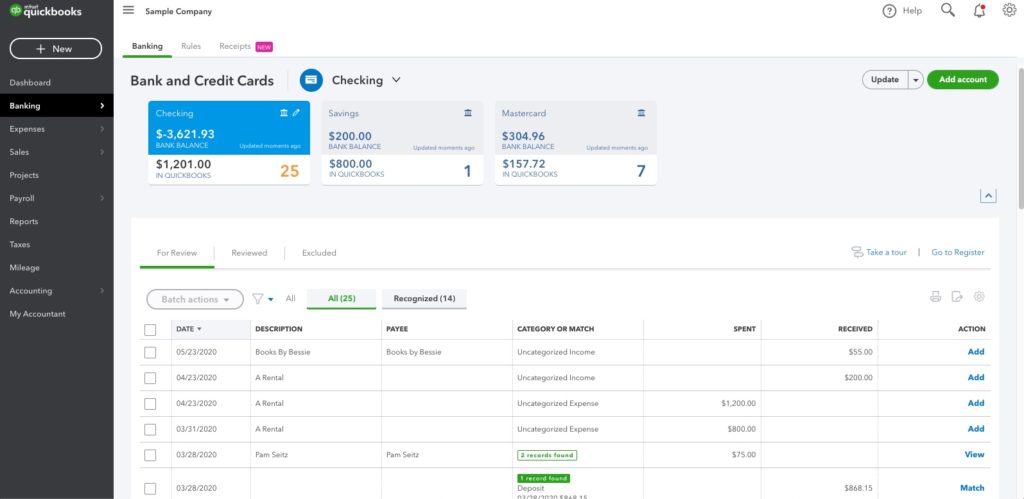
In this example, 25 transactions for the checking account need to be resolved. Looking at the 2nd, 3rd, and 4th lines, we can see that these are all transactions related to “A Rental,” we can assume that the expense account is the same for all three. This is a great example of how bank rules can save you time. Instead of naming and correcting the expense account for all three, QuickBooks can do that for us.
Click on a transaction; in this case, I clicked on the $1,200.
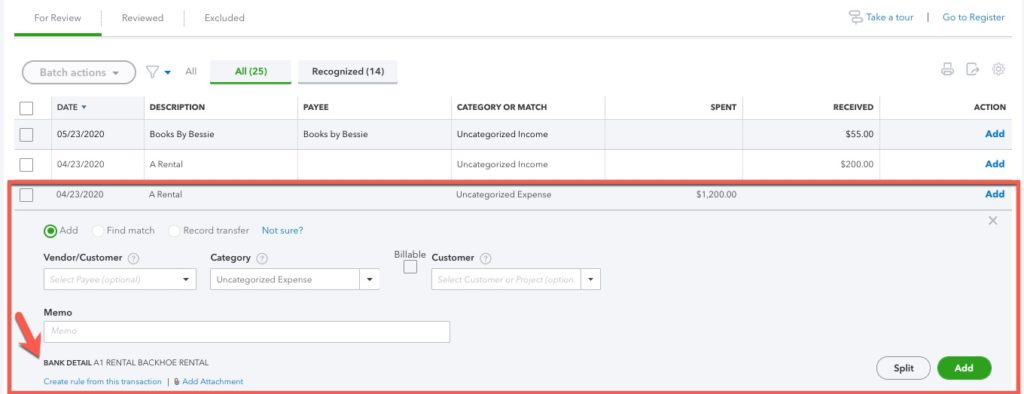
On the bottom left hand corner of the box that just opened or expanded you’ll see a blue hyperlink that says “create rule from this transaction”. Doing this will open a new screen, the bank rule screen! Are you surprised? 😉

To create a rule, you’ll need to fill in the boxes.
- Rule name: This is the name that will be used to sort your list alphabetically. It is just for you.
- For: Does this apply to money going into OR out of your bank account(s)?
- In: Does this rule apply to all of your bank accounts, just some of them, just one? You pick!
- When a transaction meets [ ] conditions: I change this to “any” or “all”.
- Drop down lines: I click on “add line”, I have the first field say “Bank text”, the second field say “Contains” and then for the last field I copy and paste the bank text from the downloaded data.
- Transaction type: What is this? Is this an expense? A transfer? Pick whatever applies.
- Payee: Who (human or business name) is getting the funds
- Category: What account on the chart of accounts applies to this situation?
- Memo: Do you want to add something to the Memo field?
- How do you want to apply this rule?: Auto-categorize and auto-add automatically adds it to your register without stopping at the bank feeds screen. Auto-categorize and manually review let’s you review it in the bank feeds first.
Pick whichever you’d prefer. I recommend manual review until you get comfortable.

Above, you can see how I set this up for my example.

Above, you can see how using bank rules changed the bank feeds. QuickBooks Online automatically renamed the payee from a blank field and changed the expense from uncategorized expense to the expense account I picked.
You’ll notice that the $200 deposit isn’t renamed, and the account isn’t updated. This is because the rule you just created ONLY applies to money out.
NOTE: QuickBooks runs bank rules sequentially. This can cause some rules to “override” others. If you notice some of your rules not running, click on the Rules tab on the Banking screen and change the order that your rules run:
Creating a Bank Rule to Organize Transactions by Payee
We’ll start by organizing transactions by the Payee. In my example the Payee field is blank.
I never like to leave Payee blank so I’m going to create a rule to fill that in. To do so I click anywhere on the transaction, that isn’t “Add” in the Action field, that will open the transaction.
You’ll notice in the Vendor/Customer box it says “Select Payee (optional)” you’ll click there to enter a Payee.
I enter the name of a new Payee and get a pop-up where I can pick what Type of Payee they are:
- Vendor – someone you give money
- Customer – someone who gives you money
- Employee – a member of your team
I’ll select Vendor as this is someone I’m giving money, and click Save.
Now I’ll select the Category (why I give this vendor money). Quickbooks will make a suggestion but you can click the box and change it to whatever you prefer.
Once again I’m going to type in something new and I get an Account pop-up where I can select the Account Type and give this new account a name. I select Expense, name it and click Save and Close.
At the bottom of the transaction, you’ll see a link “Create rule from this transaction.”
I click that link and can now create a new rule for that transaction.
For descriptions of the fields on this screen see Using Bank Rules in QOB – Part 1.
For this example I give the rule a name, leave the For field as “Money Out,” and select “All bank accounts” under In.
Under the conditions section I’ll change the Description to “Bank text” and delete the dollar amount line.
Under “Set one more of the following” I can select what I want Quickbooks to do when these conditions are met.
I want Quickbooks to automatically make the Transaction type an Expense. I select the Payee and Category, enter a memo, make sure “Auto-categorize and manually review” is selected and click Save.
You’ll see a message across the top of your transactions letting you know your rule was saved.
I can now see that four transactions automatically got this new rule by the green “RULE” in the Category field.
I’m going to select all four of these transactions, click “Batch actions” and select “accept selected.”
Those transactions will now be moved to Reviewed.
Turning on Auto-Accept
To change an existing rule from manual review to auto-accept click on Rules at the top of the screen.
Click “Edit” under Actions for the rule you’d like to update.
Scroll to the bottom of the edit screen and you’ll find the Auto-confirm slider bar. Click the slide bar to on auto-confirming and then click the green save button.
Splitting a Transaction
Now I’ll show you how you can use a bank rule to automatically split a transaction.
In this example, I’m going to pretend that I have transactions that are partially “Advertising & Marketing” and partially a “Gift” for a vendor called Anchor.
I’ll find an Anchor transaction and click the “Create rule from this transaction” link.
I name my rule “Anchor” set the conditions and in the “Set one or more of the following” section I click Split.
I can now create a rule that will automatically split transactions for Anchor where money comes out of my bank account between two categories.
In the example I’ll split it 50/50 between Advertising & Marketing and Gifts and click Save.
In my list of transactions I can now see the green RULE for all Anchor transactions and the Category has been updated to Split.
If I select a transaction and click Edit Split I can see that the transaction has been split into two categories.
Reviewing Recognized Transactions
Once you have a lot of rules setup the list of transactions For Review can become quite long. It can become difficult to find your rules that need reviewing.
Instead of viewing all the transactions that are For Review click on Recognized.
You’ll now see the transactions that Quickbooks knows (or thinks it knows) what to do with. This includes all the transactions with rules.
You can now review all these transactions and if you’re happy with them click the checkbox next to Date to select them all. Click Batch actions and Accept Selected to move them all to Reviewed.
For myself, I wouldn’t do this as I like to add Payees for all my transactions.
So there you go, if you add a rule or two each time you process your Quickbooks you’ll find yourself spending less time reviewing so you can spend more time on the rest of your business.
Want to play around in the sandbox without messing up your QuickBooks Online data file? Here is the link to Intuit’s test file: https://qbo.intuit.com/redir/testdrive
☕ If you found this helpful, you can say “thanks” by buying me a coffee…
https://www.buymeacoffee.com/gentlefrog
Watch the video tutorial version below:

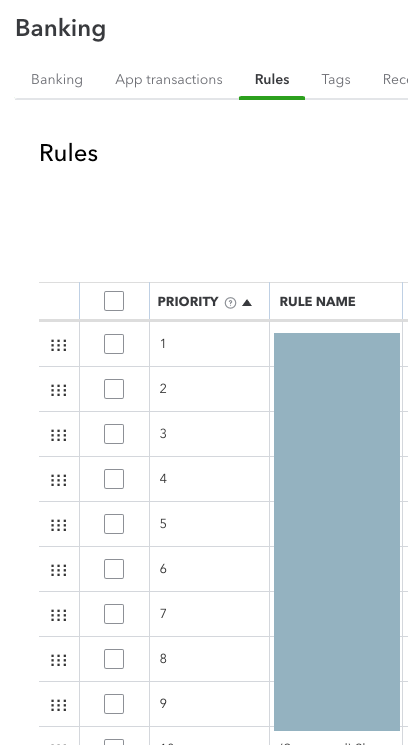

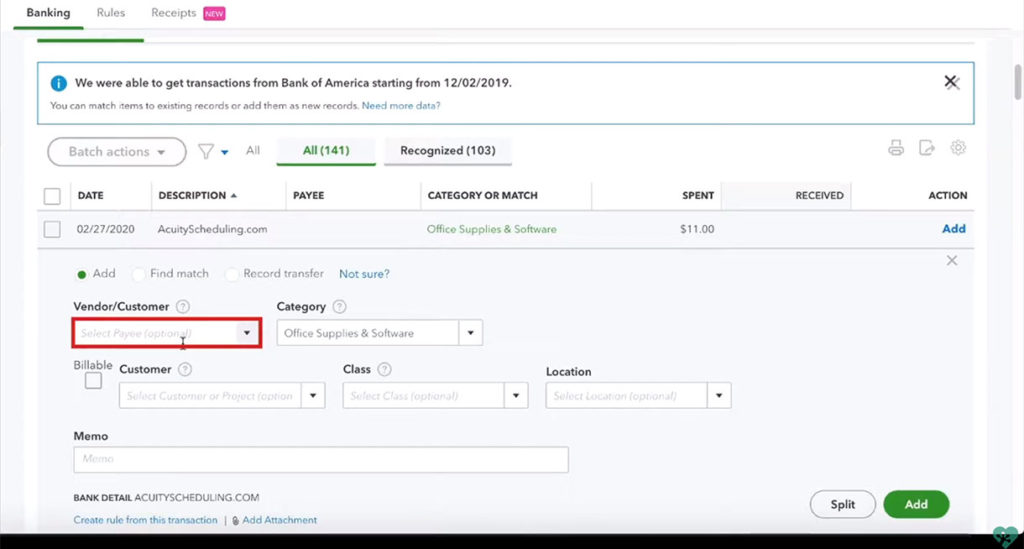
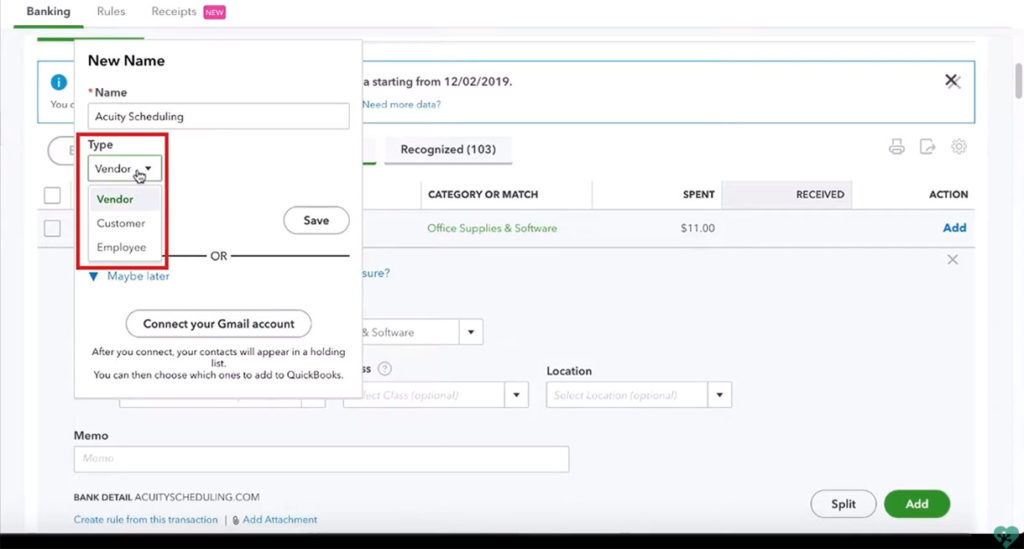
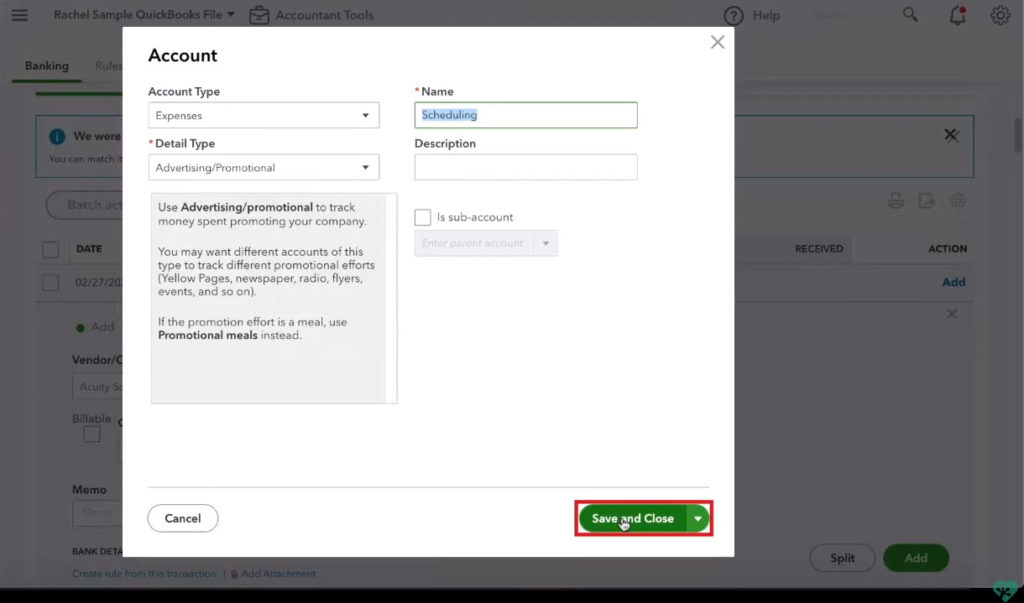
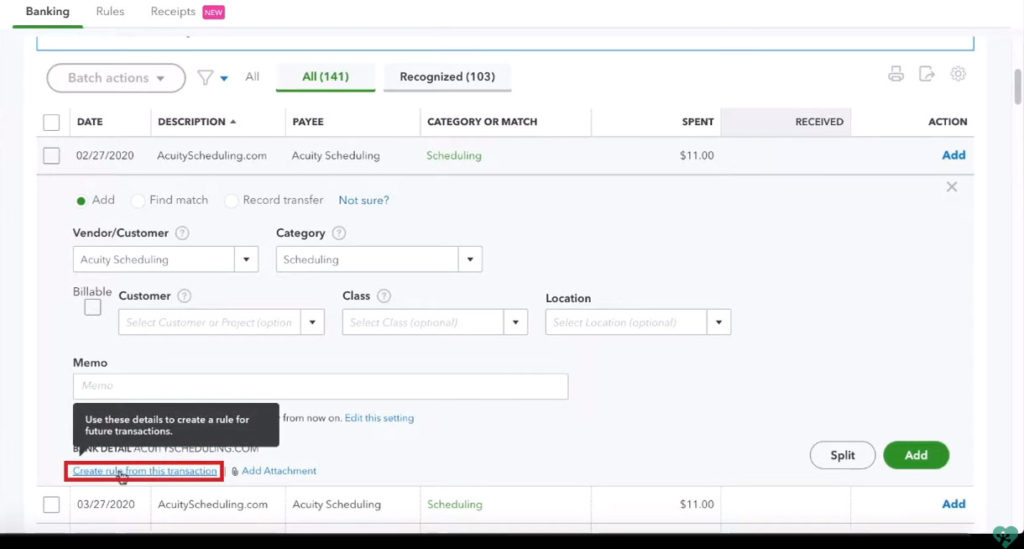
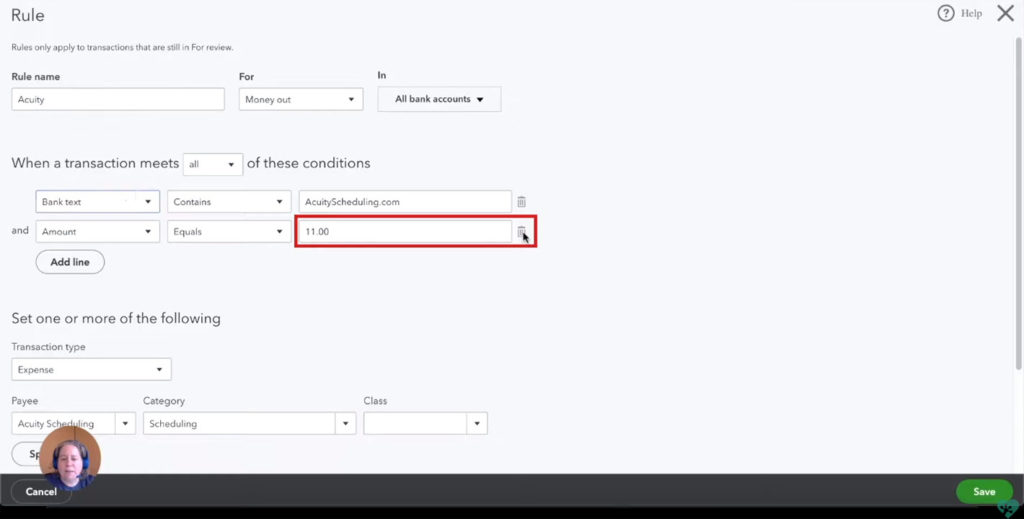
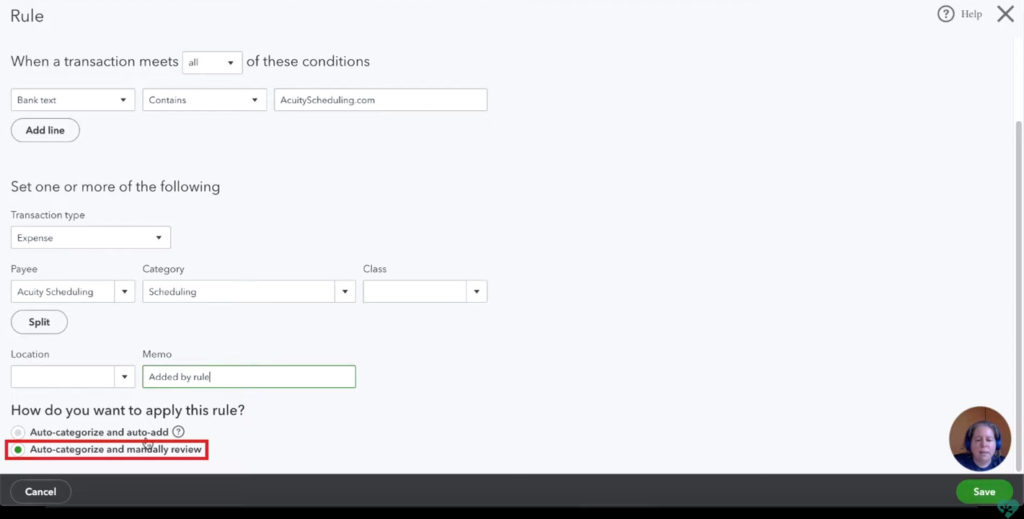
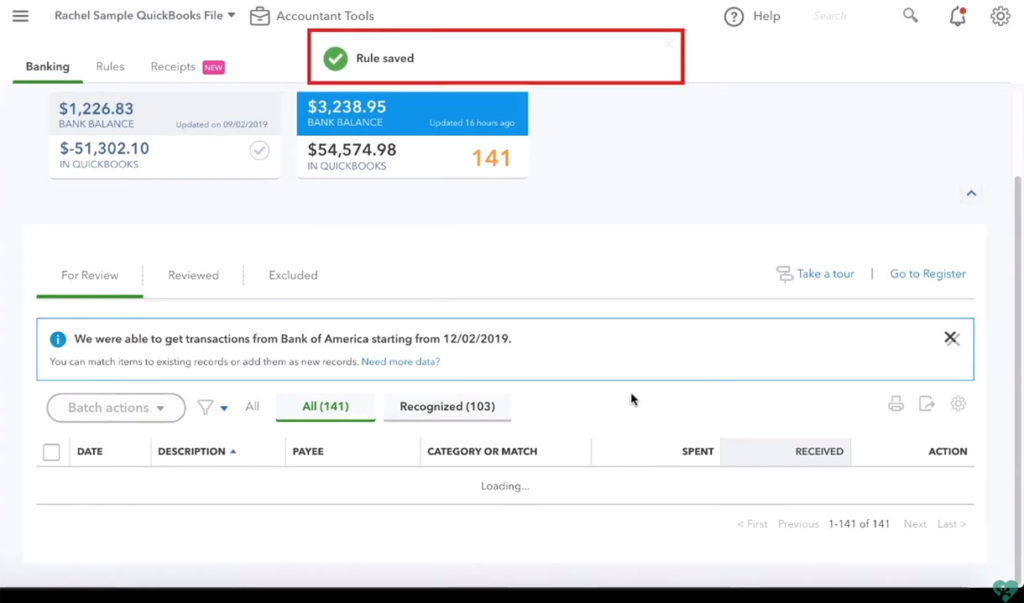
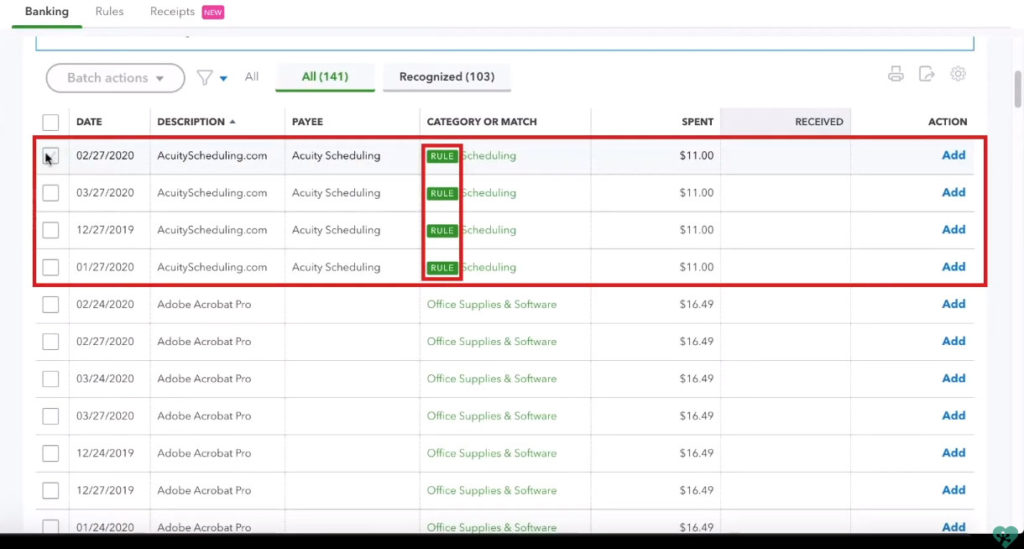
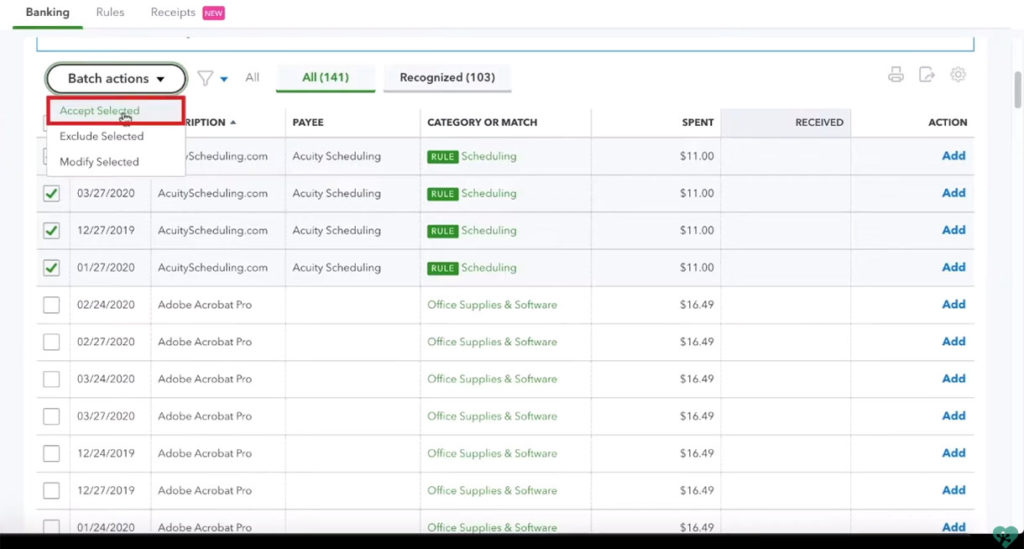
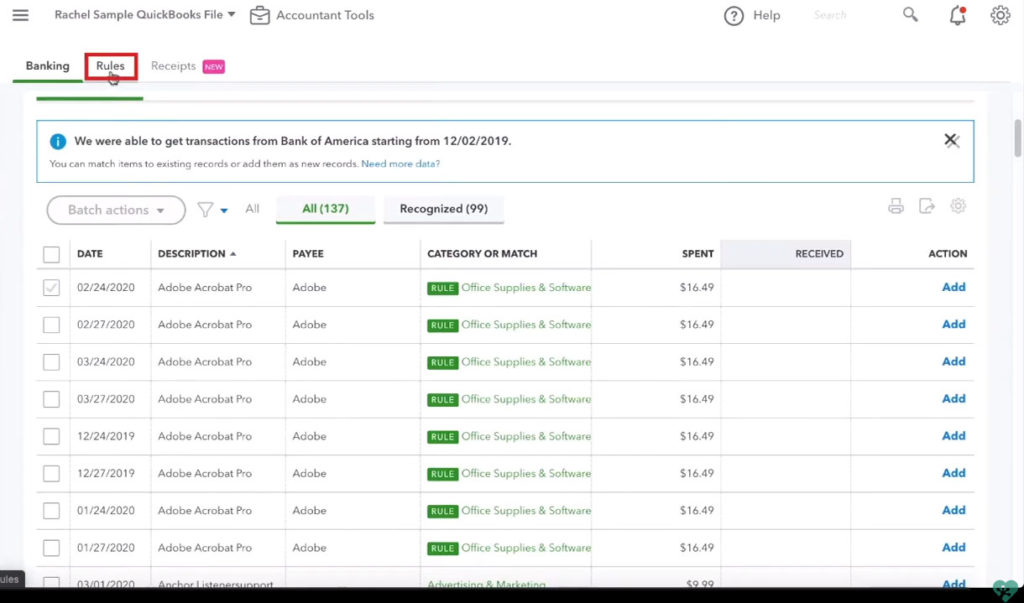
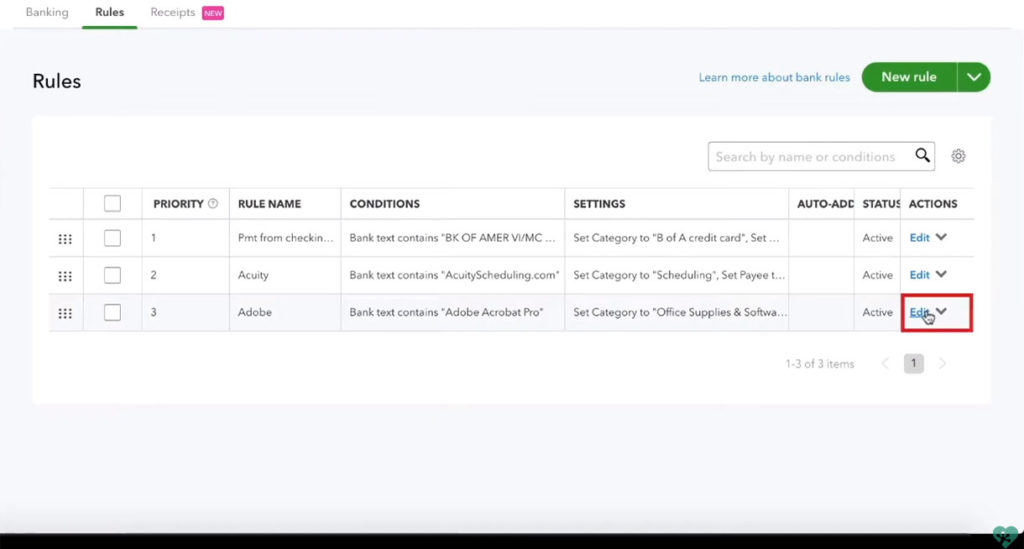
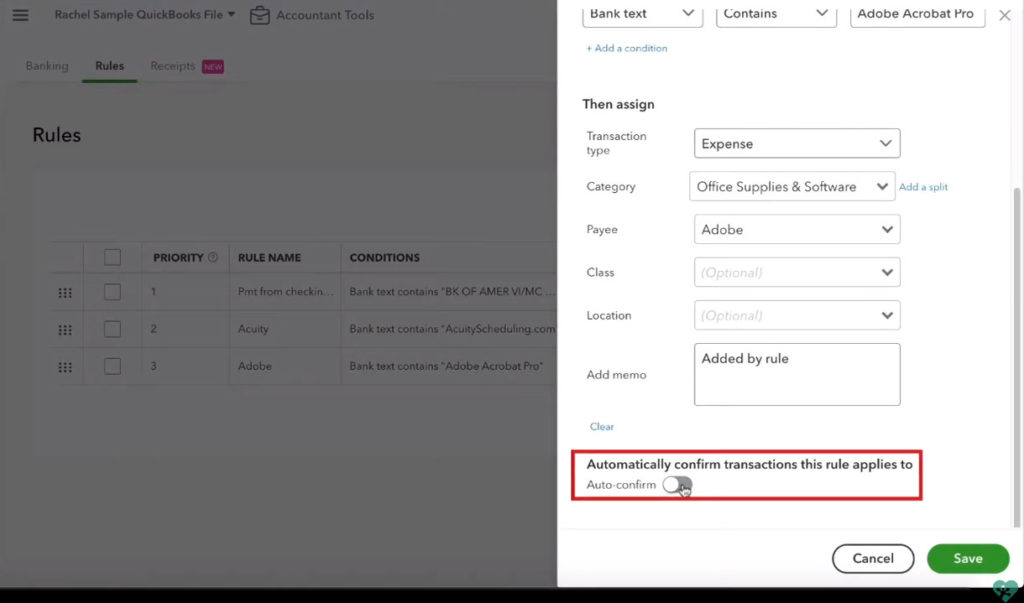
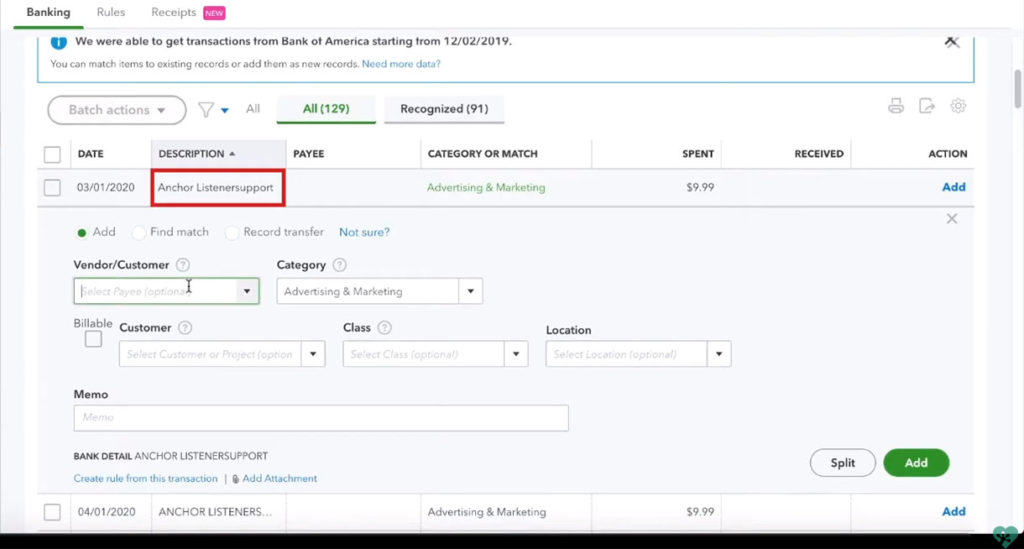
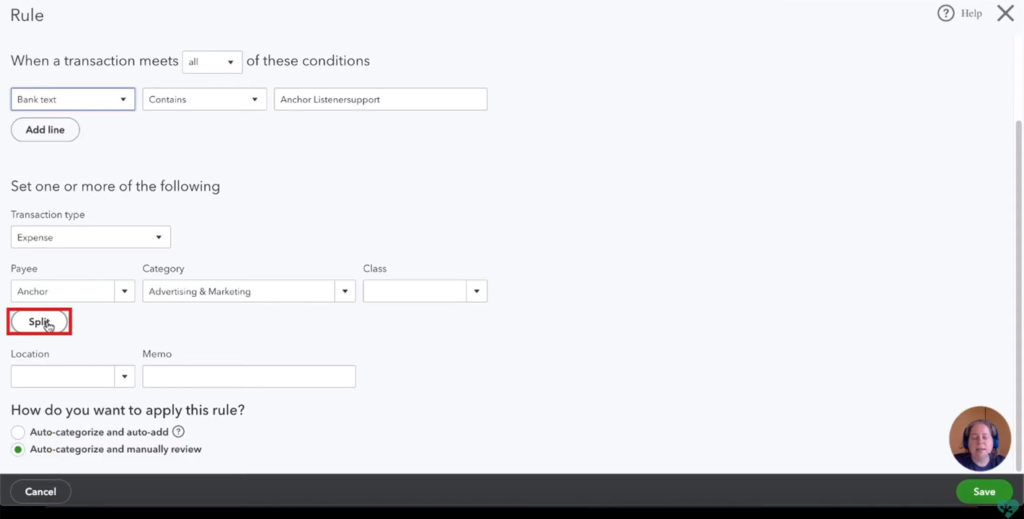
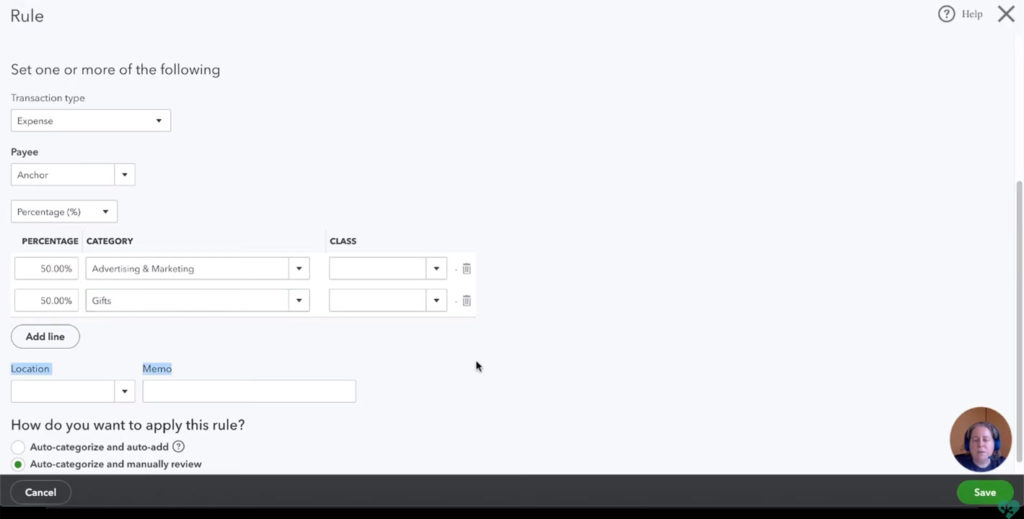
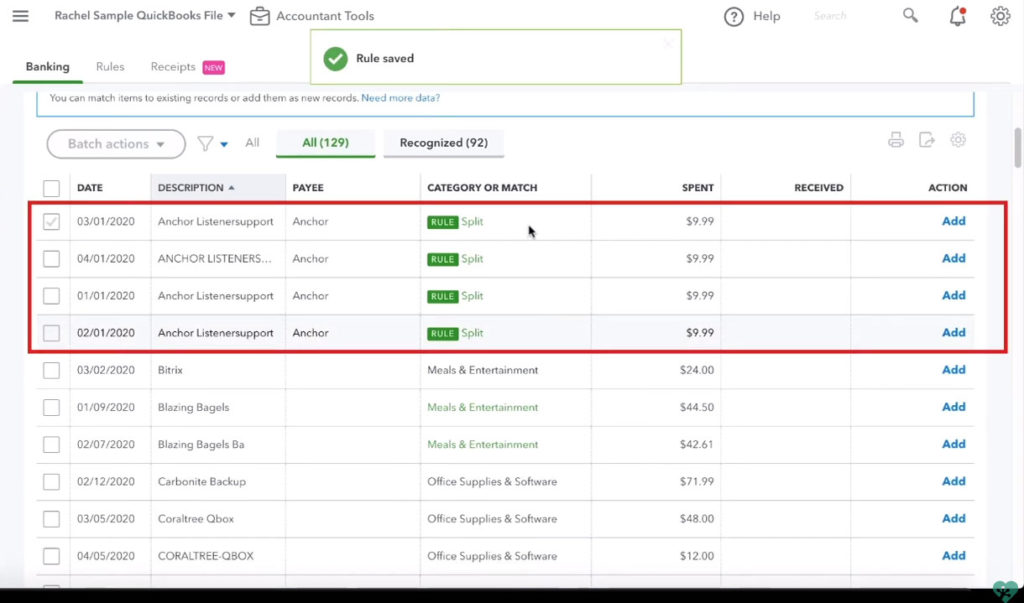
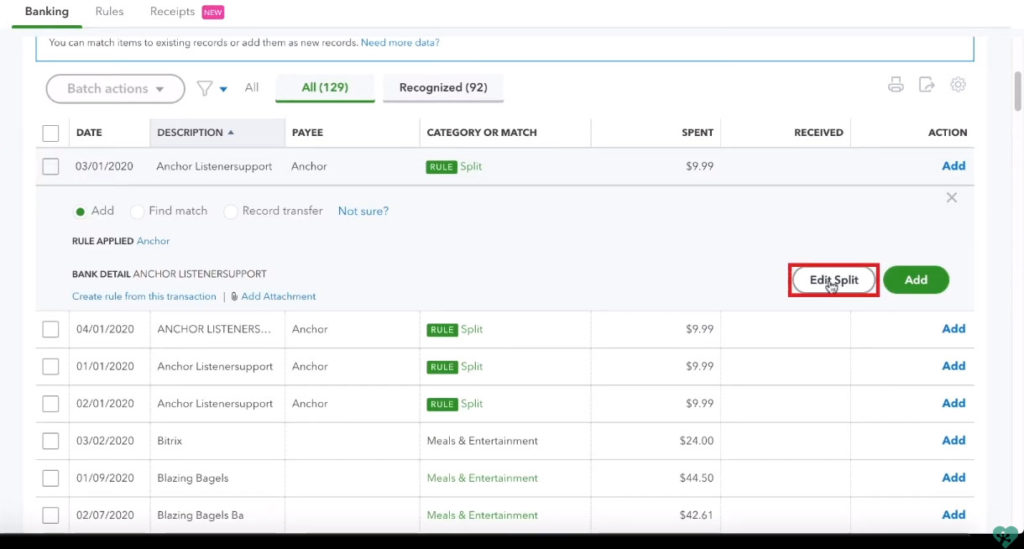
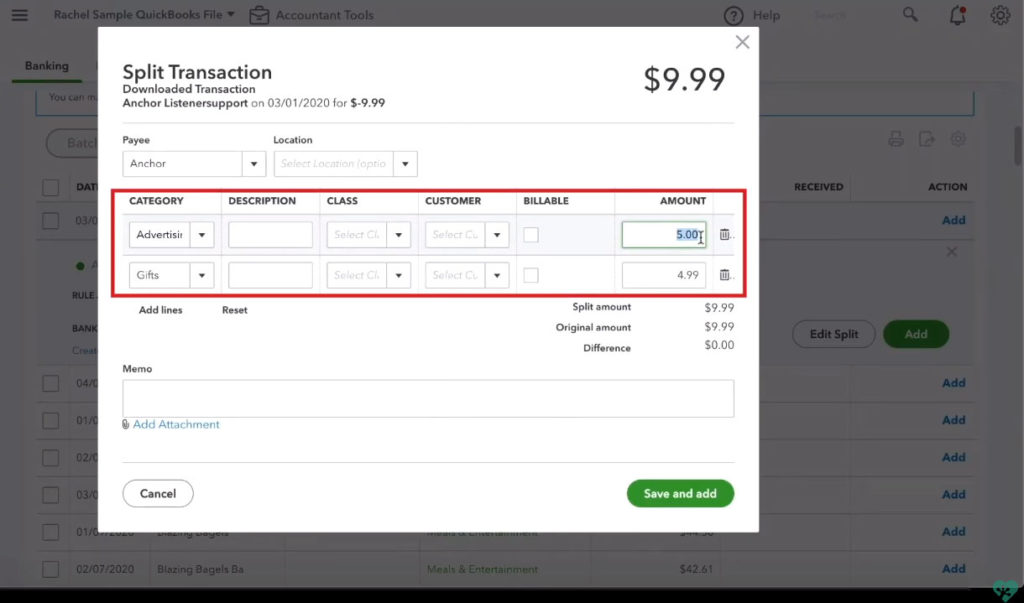
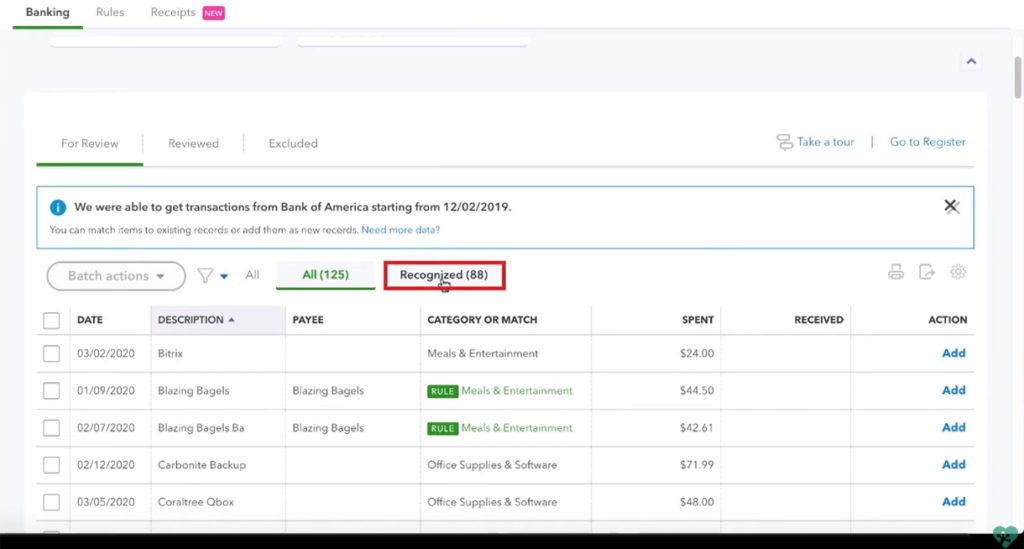





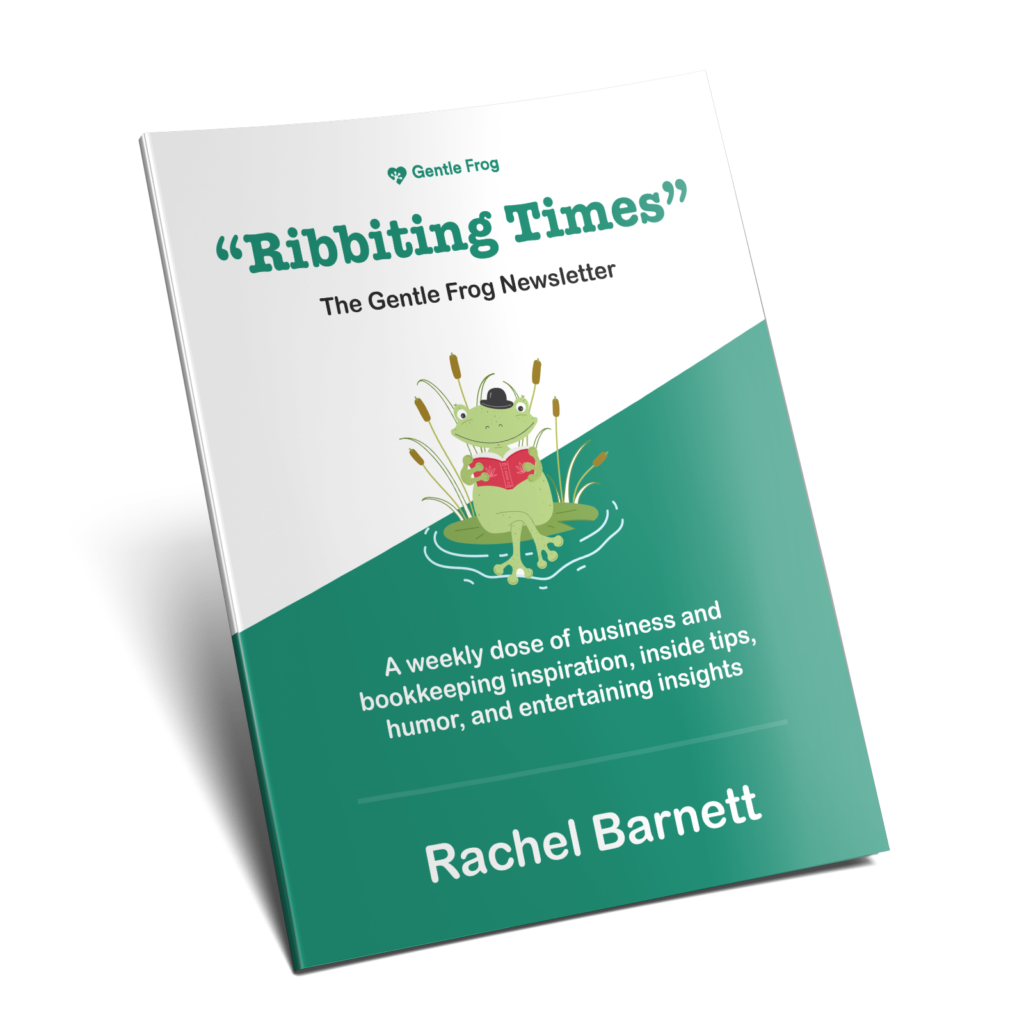
2 Responses
I’m trying to determine if it’s best to have my rules set up prior to importing my bank trx or not.
In prior years , even if I have some rules created, the bank feed trx seem to either ignore or not accurately comply with my rules which creates extra work.
Thx
Be Well.
Hi Christopher,

Bank rules can be helpful but it’s important to note that QB processes them in sequential order. You can see the order on the left of the list of rules:
Changing the order of your rules apply could help.
-Jess